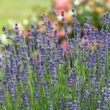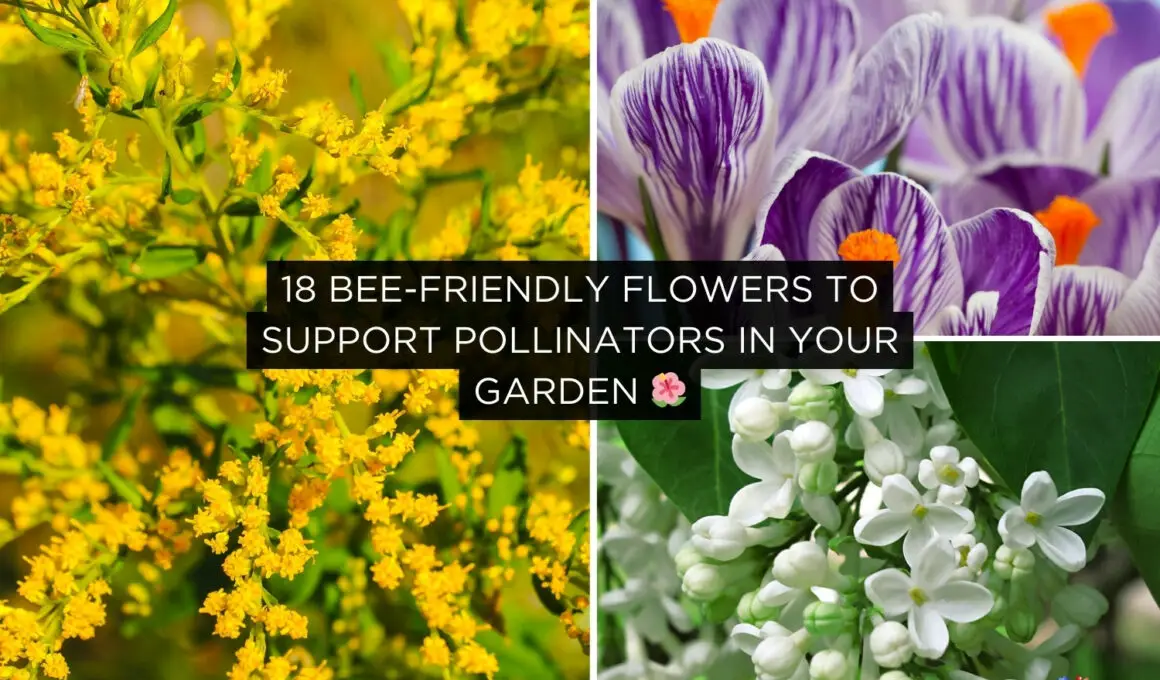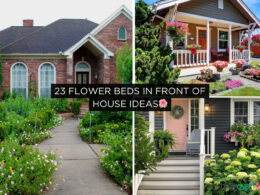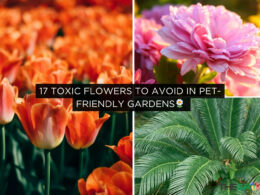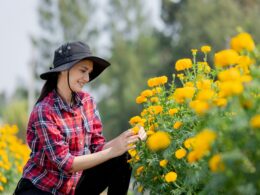In This Article Show
As an avid gardener with over a decade of hands-on experience, I’ve come to appreciate the subtle yet profound impact that bees and other pollinators have on our gardens and, by extension, our lives. Their tireless work not only ensures the beauty of our backyard blooms but also plays a crucial role in the food we eat.
Creating a bee-friendly garden is not just an act of conservation; it’s a step towards sustaining the natural ecosystems we so heavily rely on. Through my years of gardening, I’ve discovered that certain flowers are like magnets for bees, drawing them in with their colors, shapes, and the promise of nectar.
In this post, I’m excited to share with you a list of 18 bee-friendly flowers that can transform your garden into a buzzing oasis of life. These flowers are not only easy to grow but are also sure to add a splash of color and vitality to your garden space.
Spring Bloomers
A garden abuzz with the activity of bees is a sign of health and vitality, a testament to the role we can play in supporting nature’s delicate balance. Not only will you be aiding in the conservation effort for bees, but you’ll also be rewarded with a garden that’s alive with color and activity. So, let’s embark on this journey together, nurturing our gardens to become thriving sanctuaries for bees and other pollinators.
1. Crocus
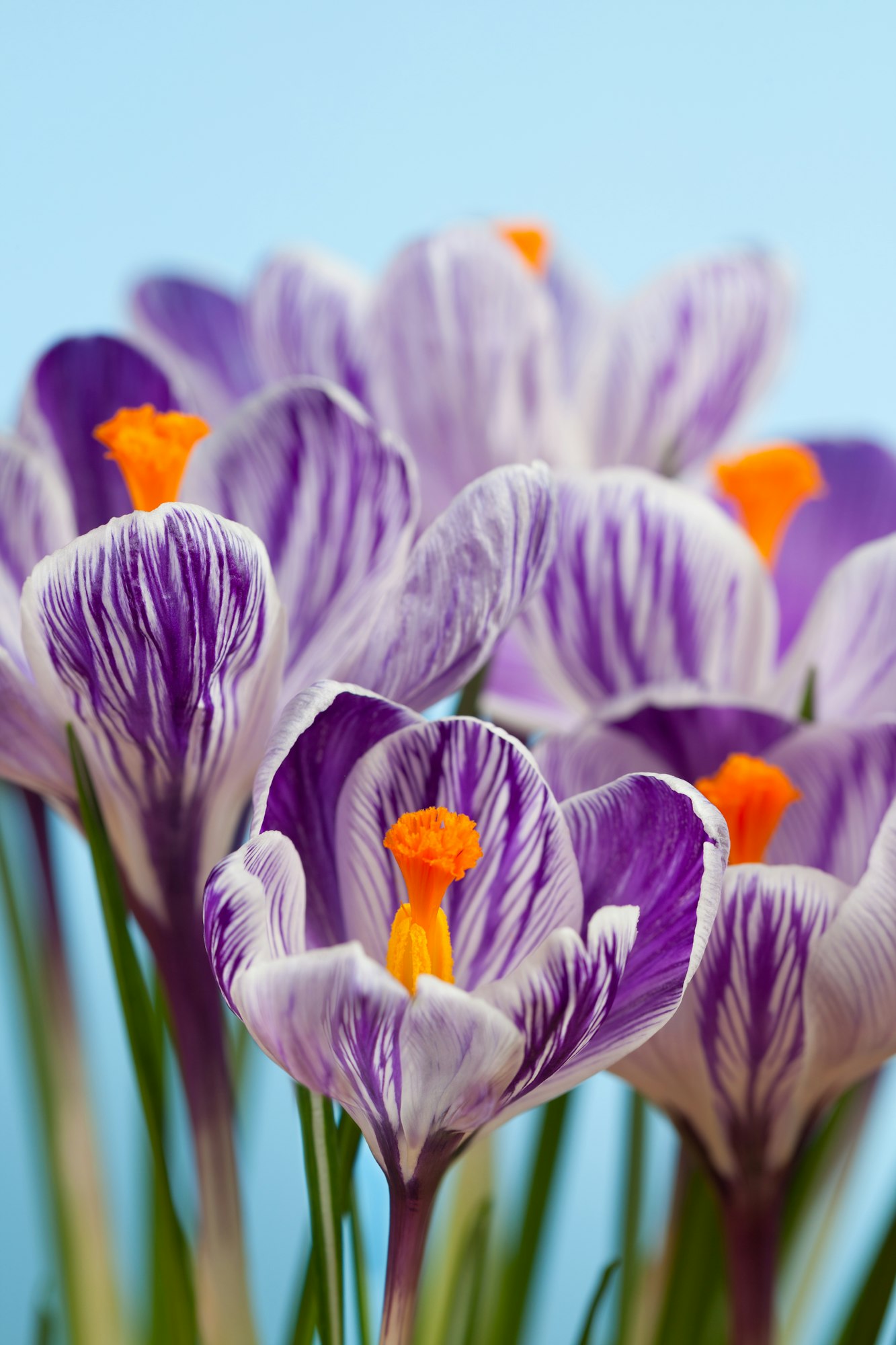
Crocuses are among the first heralds of spring, breaking through the frost with their vibrant hues of purple, yellow, and white. These early bloomers serve as a critical food source for bees, who venture out in search of nourishment after the long winter.
The crocus’s cup-shaped petals are not just aesthetically pleasing; they are designed to welcome pollinators with open arms, offering them easy access to pollen and nectar.
Get Gardening For Beginners
Our new EBOOK shows newcomers and green thumbs alike a step by step guide to growing the garden of their dreams.
- Gardening Tips: For a successful bloom, plant crocus bulbs in the autumn. Choose a sunny spot with well-draining soil and bury the bulbs about 3-4 inches deep, ensuring they have enough room to spread out.
- Benefits for Bees: Crocuses are invaluable for bees emerging from hibernation, providing them with an essential source of pollen and nectar when little else is available.
2. Snowdrop
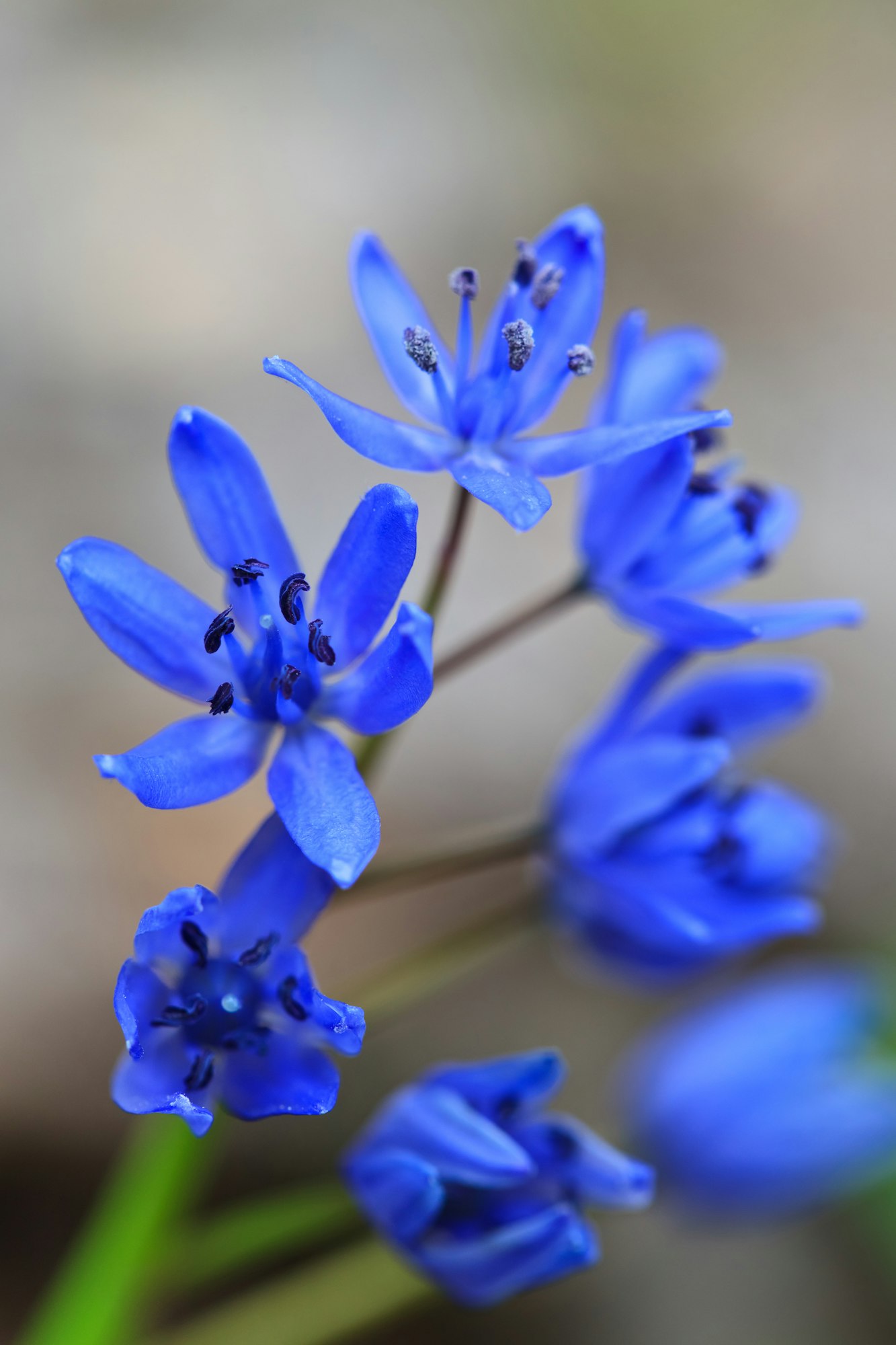
Snowdrops are delicate yet resilient flowers, often piercing through the last snows of winter with their elegant white blooms. These flowers are not only a symbol of hope and renewal but also a vital early spring food source for bees. The drooping bell-shaped flowers, marked with green at their tips, offer a stark contrast against the barren winter landscape, beckoning to hungry pollinators.
- Gardening Tips: Plant snowdrop bulbs in the fall, in moist but well-drained soil, ideally under deciduous trees where they can enjoy filtered sunlight.
- Benefits for Bees: Offering nectar and pollen early in the year, snowdrops are a beacon for bees, providing them with much-needed energy as they awake from hibernation.
3. Wild Lilac (Syringa vulgaris)
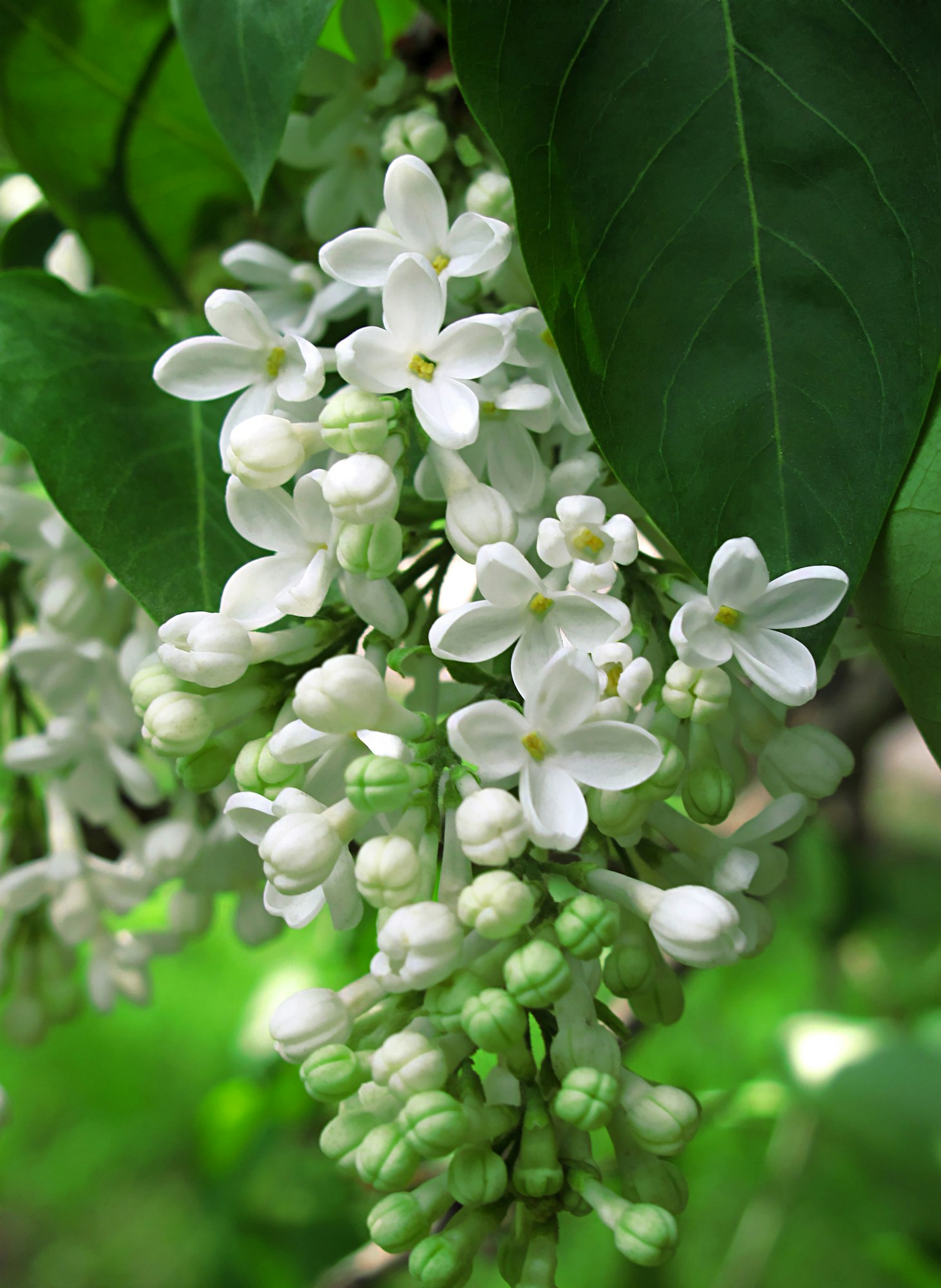
Description: Wild Lilac, with its clusters of fragrant, purple flowers, is a feast for the senses in any spring garden. This robust shrub not only adds a splash of color and a heady aroma but also acts as a magnet for bees and butterflies. The dense blooms provide an abundant source of nectar, making it a favorite among pollinating insects.
- Gardening Tips: Wild Lilac thrives in well-drained soil and full sunlight. Plant in a spot where it can bask in the sun’s rays to encourage a profusion of fragrant blooms. Pruning immediately after the blooming season promotes growth and ensures a bounty of flowers the following year.
- Benefits for Bees: The lavish nectar supply of Wild Lilac supports a wide array of pollinators, offering a nutritious feast during the critical spring months.
Summer Favorites
4. Lavender (Lavandula)
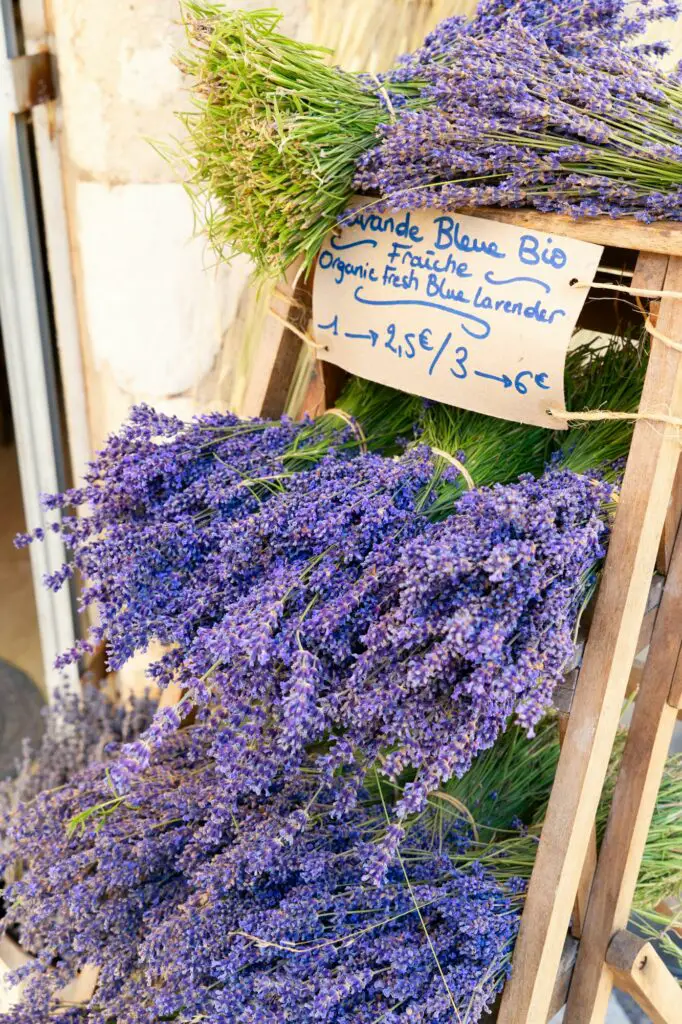
The sight and scent of Lavender in full bloom is truly unforgettable. This perennial favorite not only brings a Mediterranean charm to gardens with its silvery foliage and purple spires but also serves as one of the best plants for attracting bees. The flowers’ rich nectar is highly sought after by bees, while the aromatic oils are cherished by humans.
- Gardening Tips: Lavender prefers sunny locations and well-draining, sandy soil. It’s relatively drought-resistant, making it an excellent choice for low-water gardens.
- Benefits for Bees: The long blooming period of Lavender, coupled with its abundant nectar, provides bees with a valuable food source throughout the summer.
5. Echinacea (Purple Coneflower)
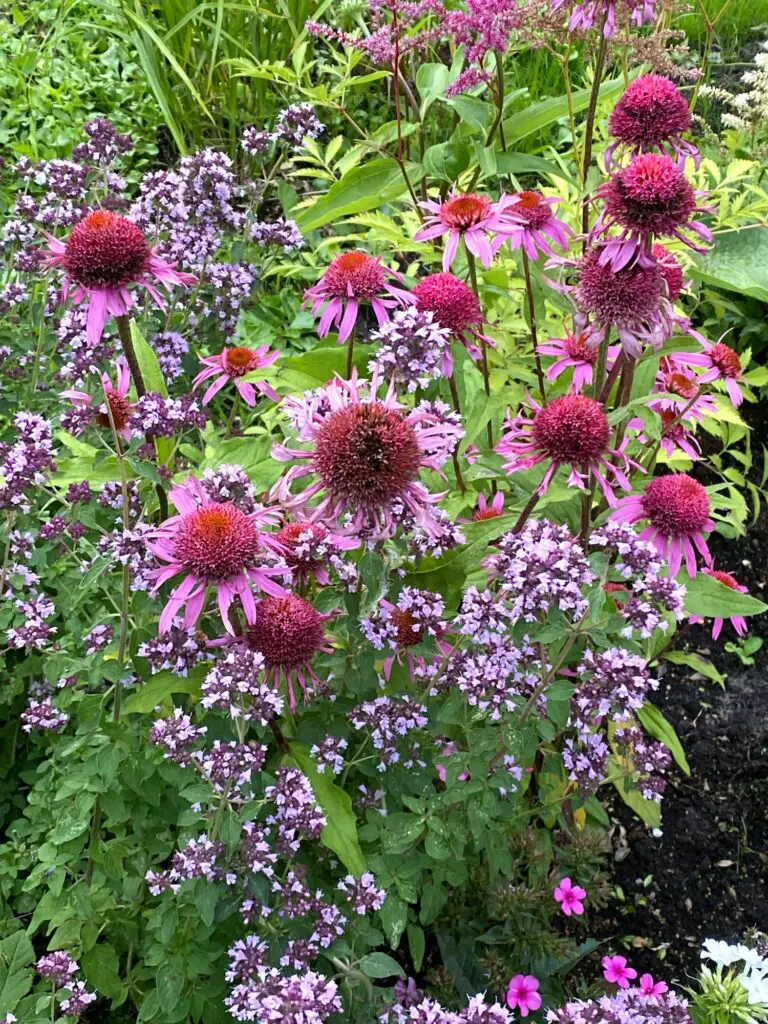
Echinacea, or Purple Coneflower, is a hardy perennial that stands out with its large, daisy-like flowers. The vibrant petals radiate around a central cone, offering not just an eye-catching display but also a rich feeding ground for bees. Echinacea’s adaptability to different soil types and conditions makes it a stalwart of the eco-friendly garden.
- Gardening Tips: Plant Echinacea in an area that receives full sun to partial shade in fertile, well-drained soil. This plant is tough and can withstand drought, making it a low-maintenance option for gardeners.
- Benefits for Bees: The open, accessible structure of Echinacea flowers makes it easy for bees to land and forage, providing them with a plentiful supply of pollen and nectar.
6. Black-eyed Susan (Rudbeckia hirta)
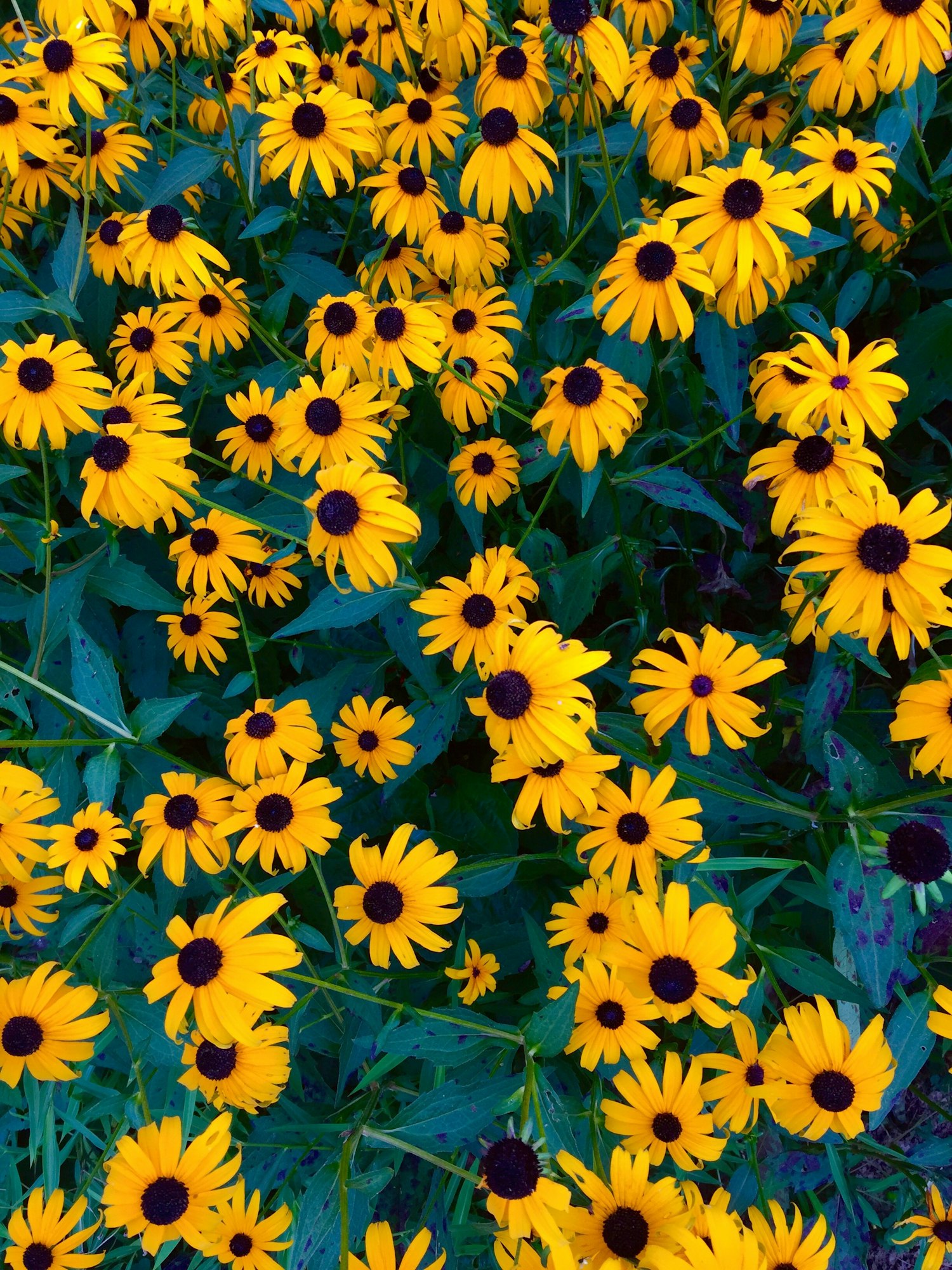
The bright, sunlit faces of Black-eyed Susan are a summer garden staple. These cheerful flowers, with their golden petals and dark, prominent centers, not only add a burst of color but are also a hotspot for bees and other pollinators. They thrive in a variety of conditions, making them a versatile choice for any garden.
- Gardening Tips: Black-eyed Susan is undemanding, growing well in full sun to partial shade and in moderately fertile, well-drained soil. They’re resilient to drought and poor soil conditions once established.
- Benefits for Bees: The flowers produce an abundance of nectar and pollen, attracting bees and ensuring their gardens are buzzing with life through the summer months.
Autumn Attractions
7. Goldenrod (Solidago)
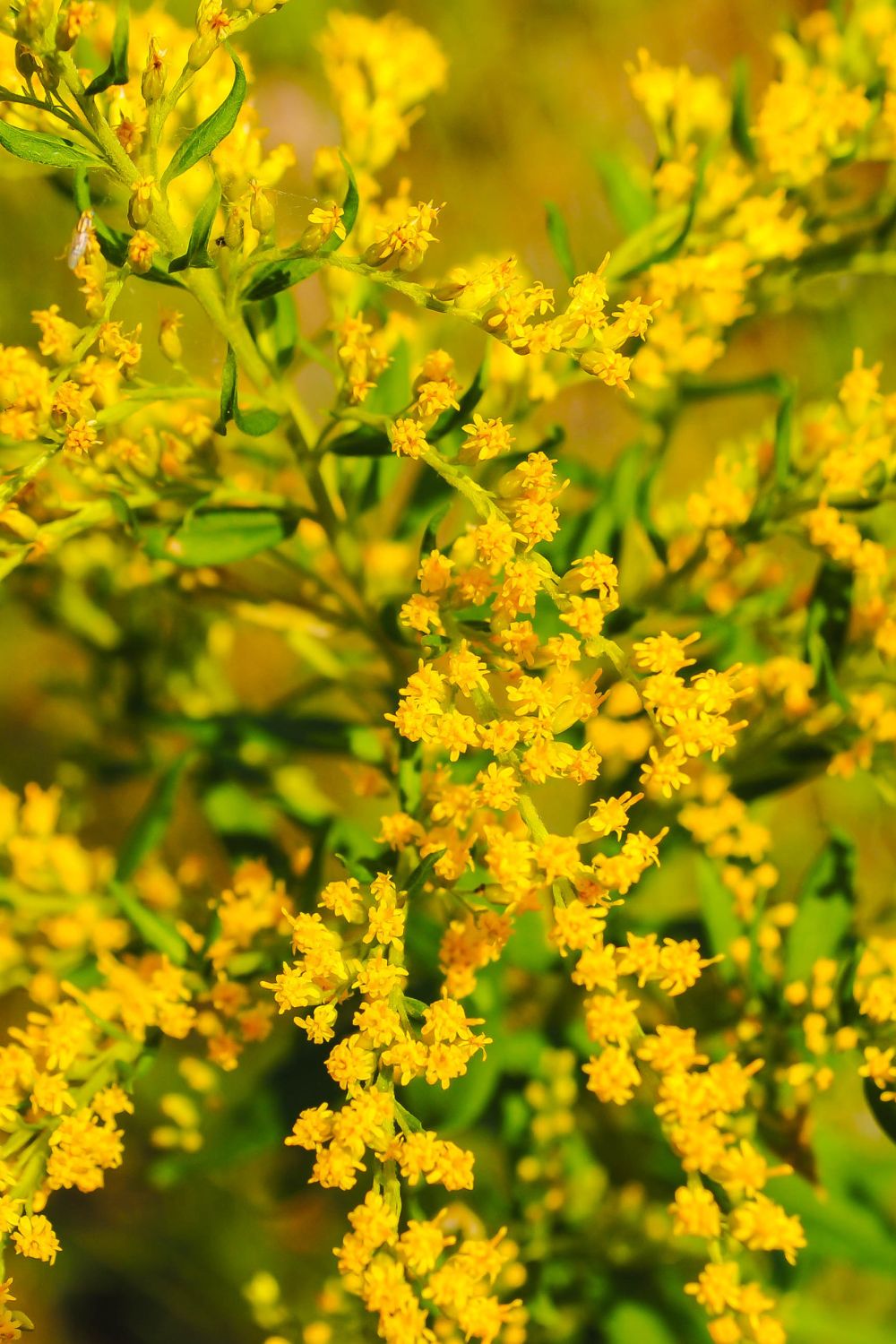
As summer wanes, Goldenrod takes center stage with its vivid yellow plumes that light up the autumn landscape. Far from being just a pretty face, Goldenrod is a critical food source for bees, providing them with nectar and pollen as other sources diminish. This hardy perennial is often unjustly blamed for hay fever, a misconception that overlooks its importance to the ecosystem.
- Gardening Tips: Goldenrod is remarkably adaptable, flourishing in full sun to partial shade and in a range of soil types. It’s drought-tolerant and resilient, making it a low-maintenance addition to any garden.
- Benefits for Bees: Blooming at a time when food is scarce, Goldenrod is a lifeline for bees, offering them sustenance as they prepare for the colder months.
8. Aster (Aster spp.)

Asters burst into a kaleidoscope of color in the fall, with their daisy-like flowers in shades ranging from deep blue to vibrant purple and crisp white. These late bloomers are not only a visual treat but also a vital source of nectar for bees, helping to sustain them as the season turns.
Get Gardening For Beginners
Our new EBOOK shows newcomers and green thumbs alike a step by step guide to growing the garden of their dreams.
- Gardening Tips: Asters thrive in full sun to partial shade and prefer well-drained soil. They are relatively easy to care for, requiring just a little pruning to keep them looking their best.
- Benefits for Bees: The timing of Aster’s blooms makes them an essential plant for bees, providing a critical food source late in the year when other flowers have faded.
9. Sunflower (Helianthus annuus)
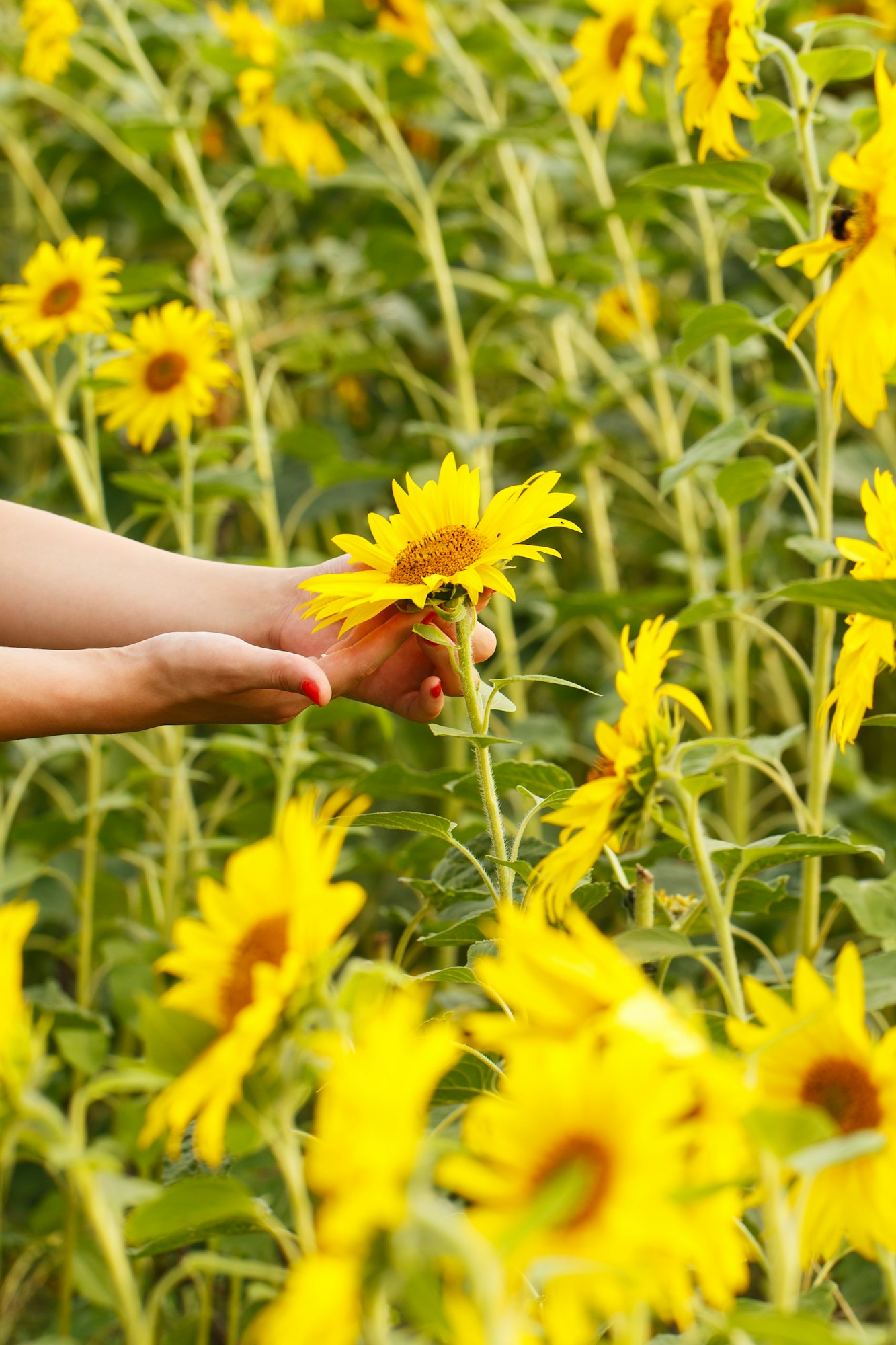
Sunflowers are the giants of the garden, reaching towards the sky with their large, sunny heads. These iconic flowers are not just a favorite among gardeners but also a key food source for bees, who flock to them for their abundant pollen and nectar.
- Gardening Tips: Sunflowers are easy to grow from seed and thrive in full sun with well-drained soil. They are fast growers and can reach impressive heights, making them a stunning backdrop for any garden.
- Benefits for Bees: The large flower heads of sunflowers provide bees with a rich source of pollen and nectar, supporting bee populations during the crucial summer months.
Year-Round Heroes
10. Rosemary (Rosmarinus officinalis)

Rosemary is not only prized for its culinary uses but also for its beautiful, needle-like leaves and delicate blue flowers. This evergreen herb is a perennial favorite in gardens, offering a year-round source of nectar for bees in warmer climates.
- Gardening Tips: Plant rosemary in full sun and well-drained soil. It’s drought-tolerant once established, making it a great choice for water-wise gardens.
- Benefits for Bees: The ability of rosemary to flower outside the traditional blooming season provides bees with a consistent source of nectar, especially valuable during the lean months.
11. Sage (Salvia officinalis)
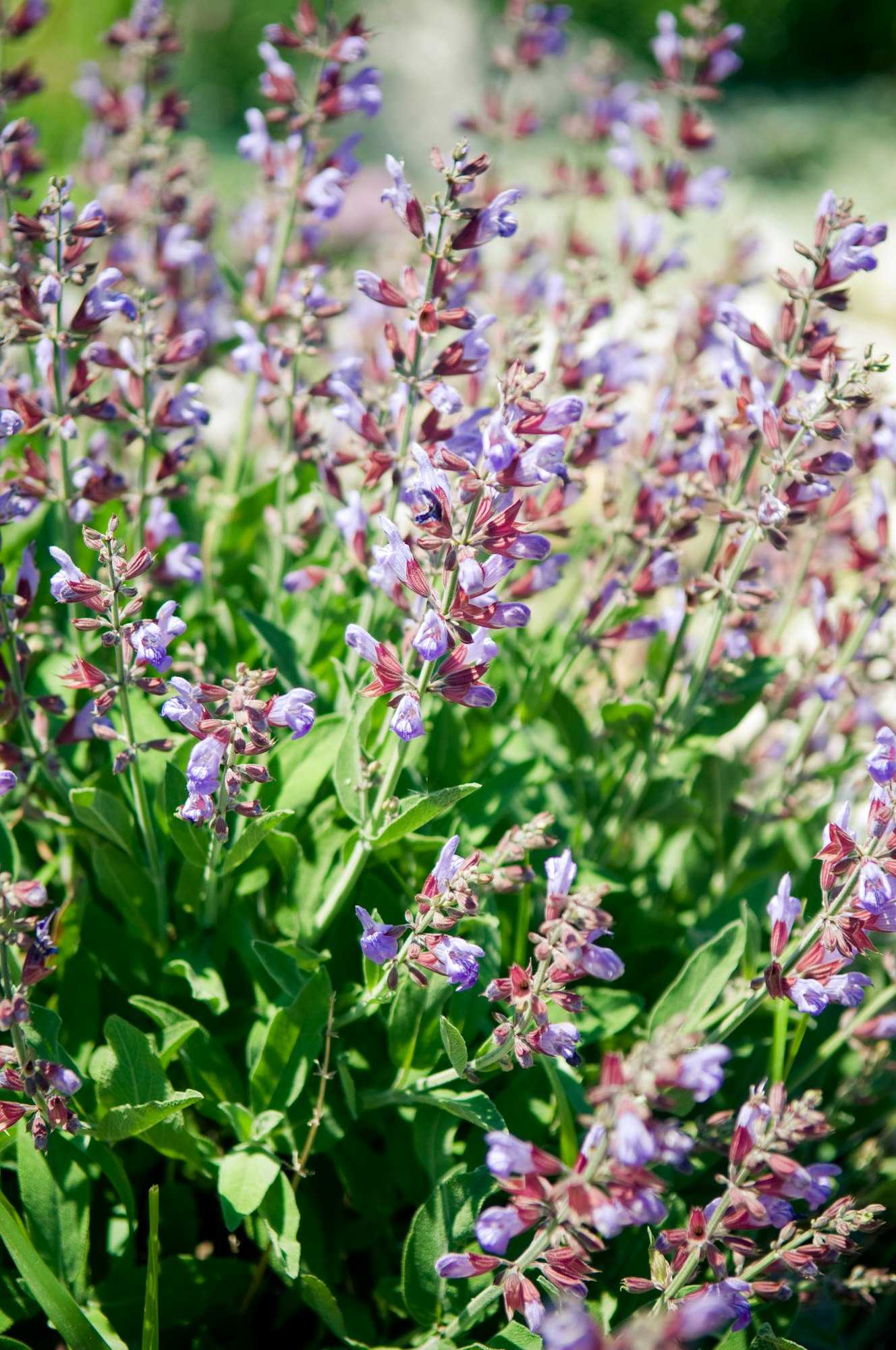
Sage, with its aromatic leaves and spikes of blue to purple flowers, is a dual-purpose plant that serves both culinary and ecological roles. This hardy herb attracts bees with its nectar-rich blooms, adding both beauty and biodiversity to the garden.
- Gardening Tips: Thriving in full sun and well-draining soil, sage is a low-maintenance herb that’s easy to grow. It’s drought-resistant, making it suitable for various garden settings.
- Benefits for Bees: Sage’s long blooming period provides bees with a reliable nectar source, making it an excellent choice for supporting pollinator populations.
12. Thyme (Thymus vulgaris)
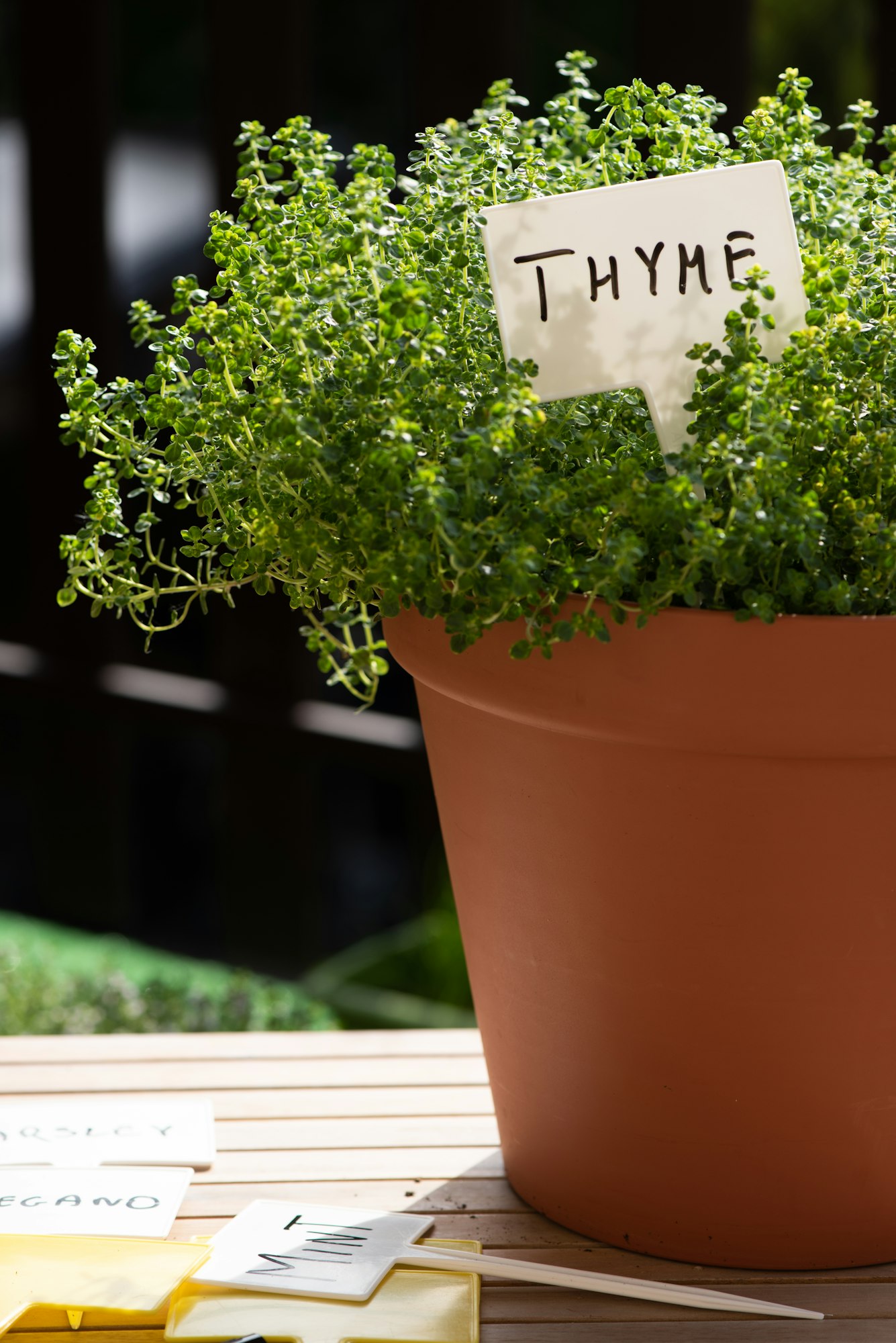
Thyme is a versatile and aromatic herb that forms a low-growing mat of tiny, fragrant leaves and clusters of small, lavender-to-white flowers. This culinary favorite is also a boon for bees, offering them a plentiful source of nectar throughout the growing season.
- Gardening Tips: Plant thyme in full sun in well-drained soil. It’s particularly well-suited for rock gardens or as a fragrant ground cover.
- Benefits for Bees: The dense flowering of thyme provides bees with abundant foraging opportunities, making it an essential component of any bee-friendly garden.
Pollinator Favorites
13. Borage (Borago officinalis)
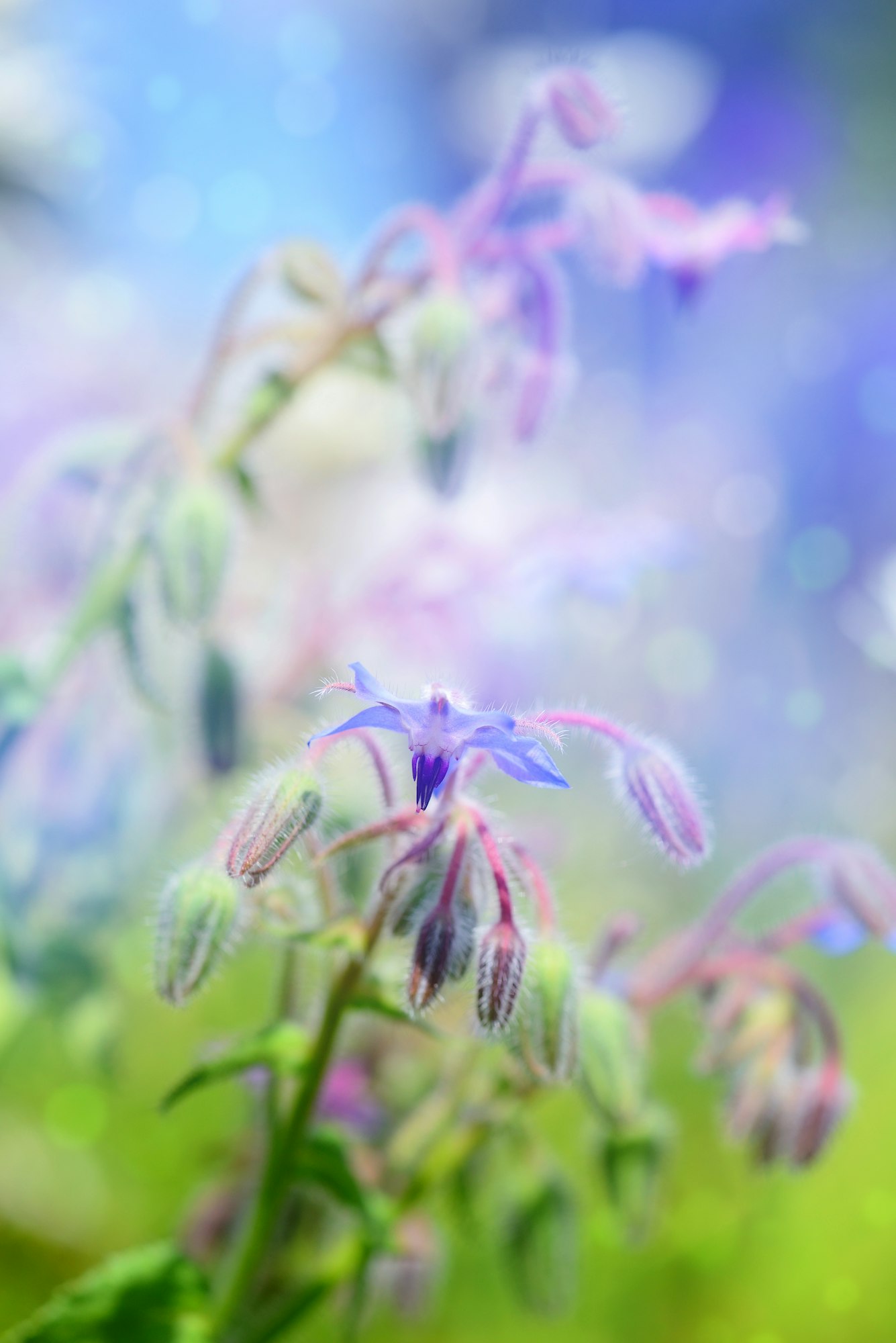
Borage is a robust plant with striking star-shaped blue flowers and hairy leaves. Known as the “bee’s bread,” borage is highly attractive to pollinators, offering them a rich source of nectar. This annual herb is not only beneficial for bees but also adds a touch of whimsy and color to the garden.
- Gardening Tips: Easy to grow from seed, borage prefers well-drained soil and full sun. It’s self-seeding and can provide a continuous supply of flowers year after year.
- Benefits for Bees: Borage is exceptional in its ability to produce nectar continuously, ensuring that bees have access to a steady food source throughout its blooming period.
14. Foxglove (Digitalis purpurea)
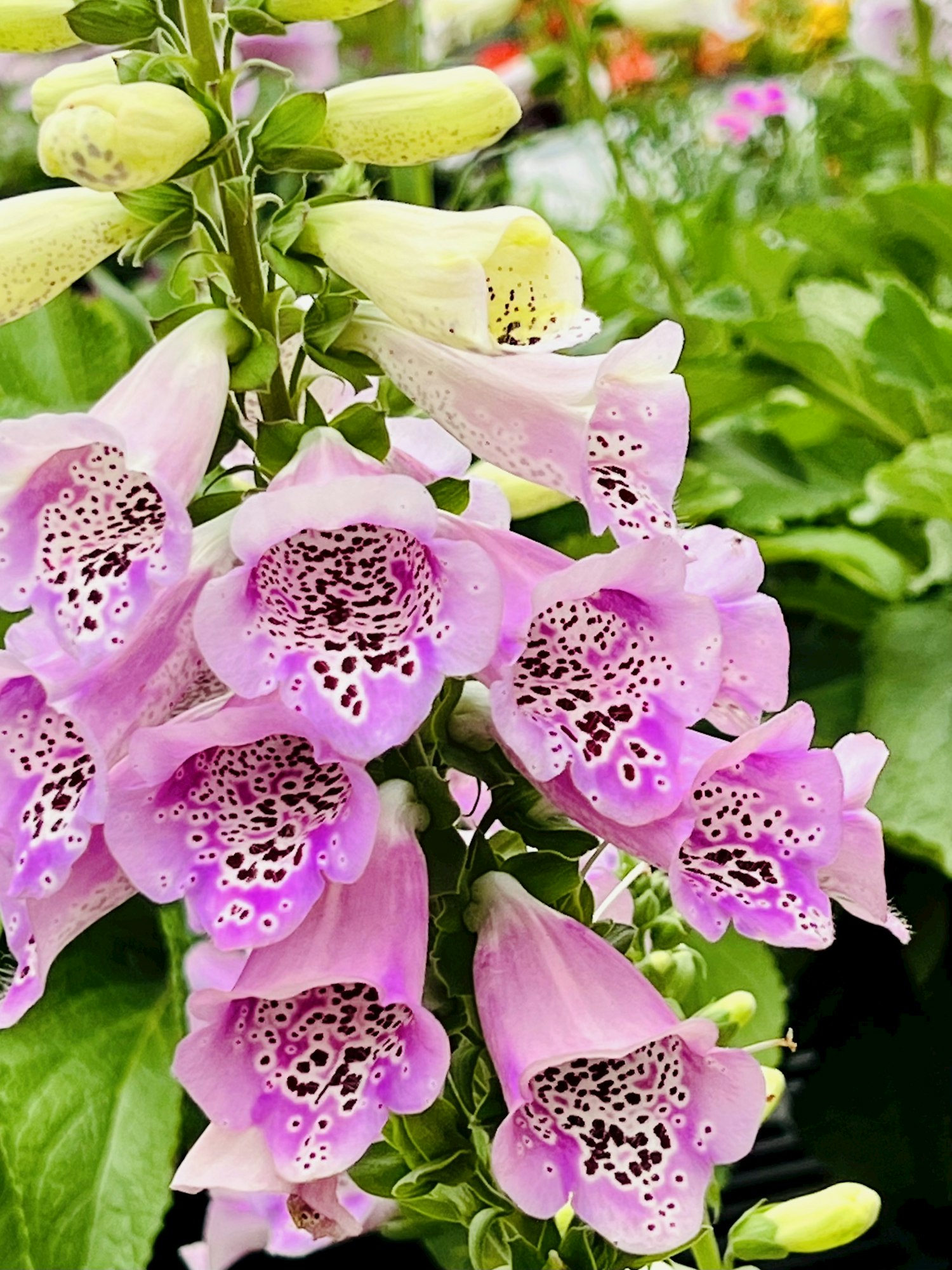
Foxglove stands tall and elegant in the garden, with its towering spikes of tubular flowers ranging from purple and pink to white. While it’s a stunning sight for gardeners, it’s also a beacon for bees, who are drawn to its nectar-rich blooms. Caution is advised, as all parts of the plant are toxic if ingested.
- Gardening Tips: Plant foxglove in moist, well-drained soil in partial shade. It prefers cooler climates and can add height and drama to shaded garden spots.
- Benefits for Bees: The shape and structure of foxglove flowers are perfectly suited for bees, allowing easy access to nectar and facilitating pollination.
15. Zinnia (Zinnia elegans)
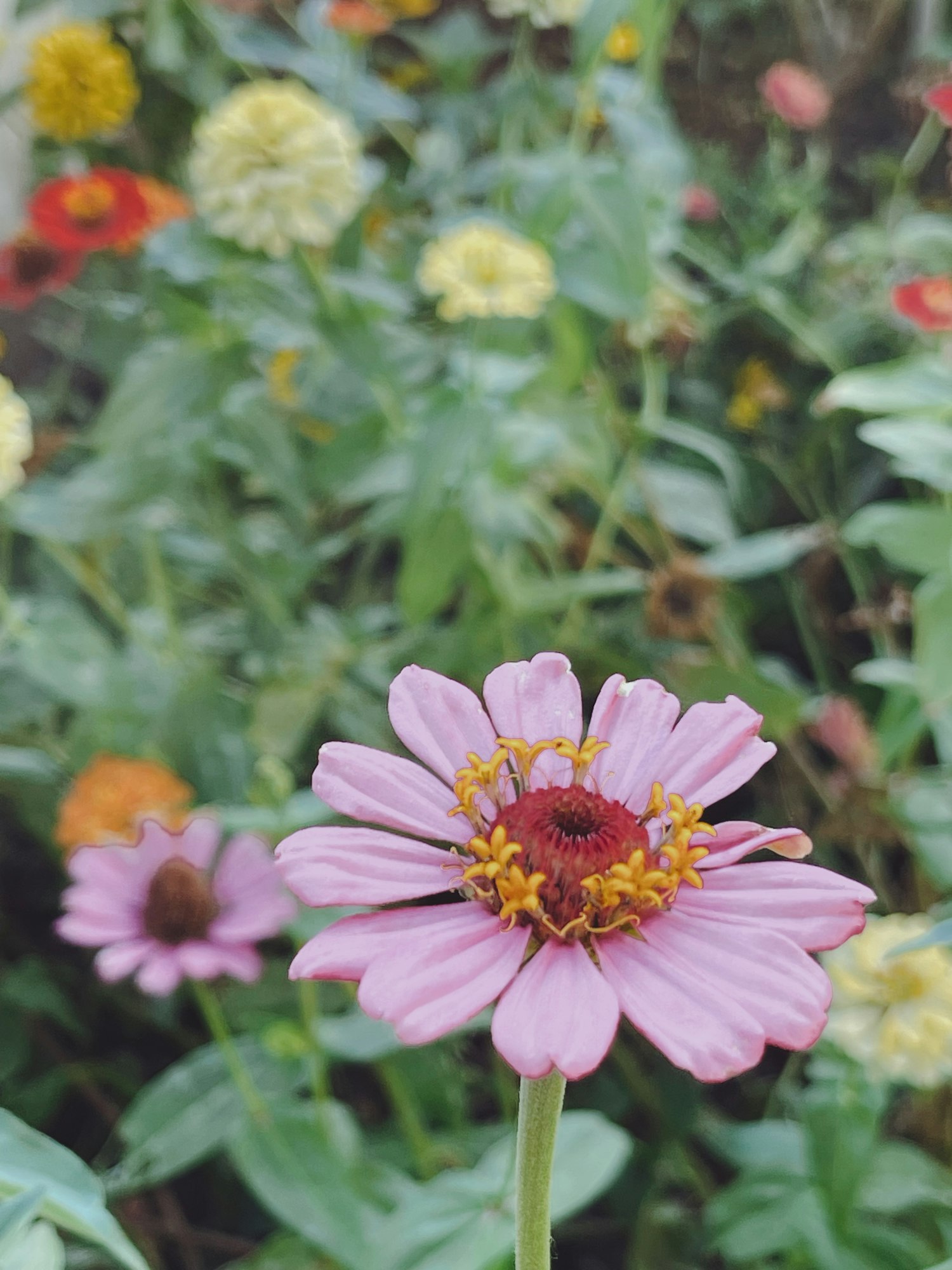
Description: Zinnias are a vibrant and cheerful addition to any garden, with their wide range of colors and flower forms. These annuals are easy to grow and are highly attractive to bees and butterflies, making them an excellent choice for adding biodiversity to your garden.
- Gardening Tips: Plant zinnias in full sun in well-drained soil. They’re heat-tolerant and can thrive in hot, sunny areas, making them perfect for summer gardens.
- Benefits for Bees: The bright, open flowers of zinnias are rich in nectar, drawing in bees and other pollinators throughout the blooming season.
16. Cosmos (Cosmos bipinnatus)
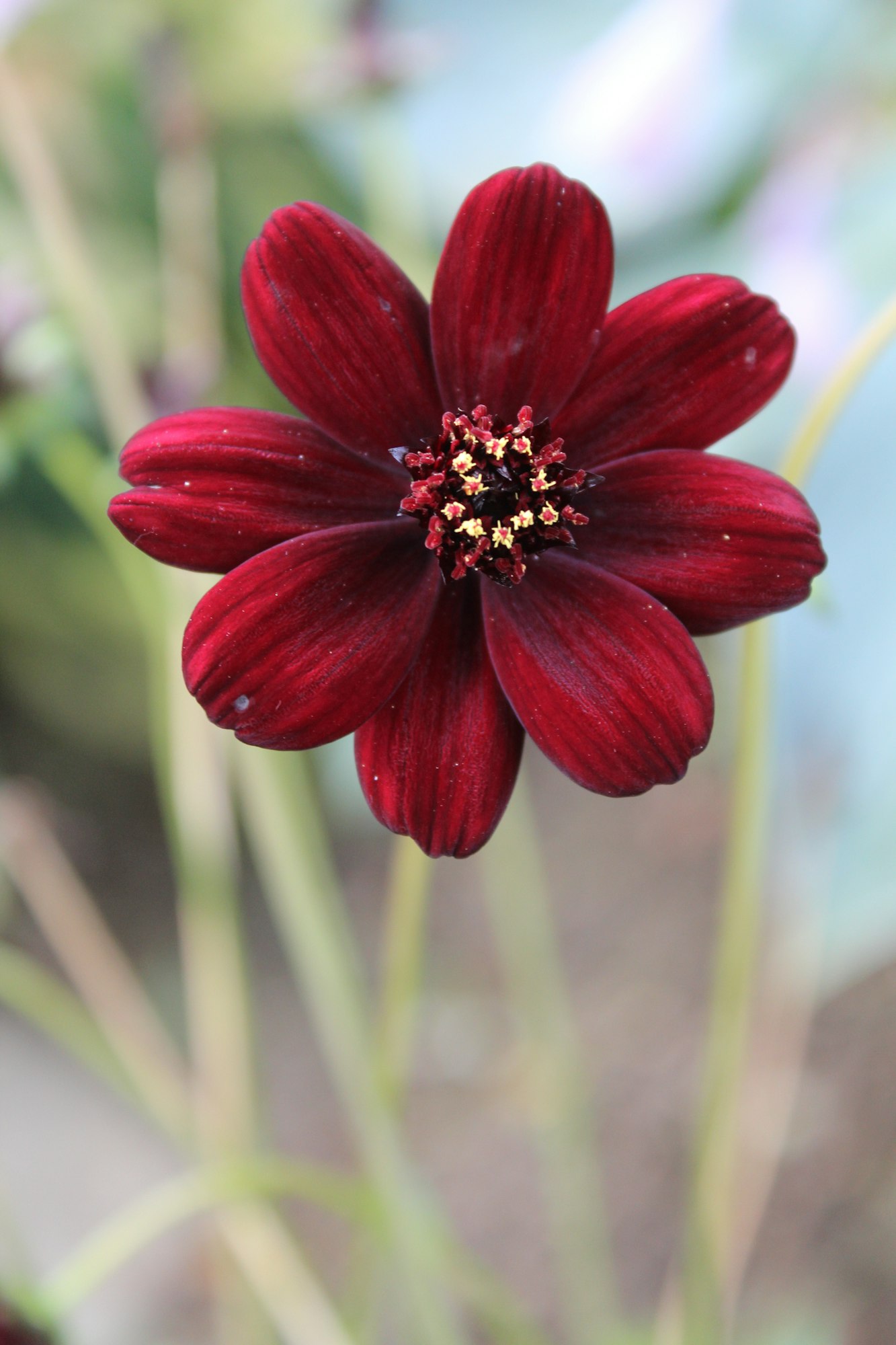
Cosmos are known for their delicate, daisy-like flowers and feathery foliage, creating a light and airy feel in the garden. These annuals come in shades of pink, purple, white, and orange, and their tall, slender stems sway gracefully in the breeze, attracting bees and butterflies.
- Gardening Tips: Cosmos are incredibly easy to grow from seed and prefer full sun and well-drained soil. They’re drought-tolerant and can bloom from summer until the first frost.
- Benefits for Bees: The simple, open structure of cosmos flowers provides easy access to nectar and pollen, making them a valuable food source for bees.
17. Calendula (Calendula officinalis)

Calendula, also known as pot marigold, brightens the garden with its cheerful, orange and yellow blooms. This versatile plant is not only known for its medicinal and culinary uses but also for its appeal to bees, who are attracted to its vibrant flowers and abundant nectar.
- Gardening Tips: Calendula is adaptable and can grow in full sun to partial shade, in well-drained soil. It’s easy to cultivate and can even thrive in cooler temperatures, extending the blooming season.
- Benefits for Bees: The rich nectar and pollen content of calendula flowers make them a favorite among bees, providing a vital food source in the garden.
18. Catmint (Nepeta spp.)
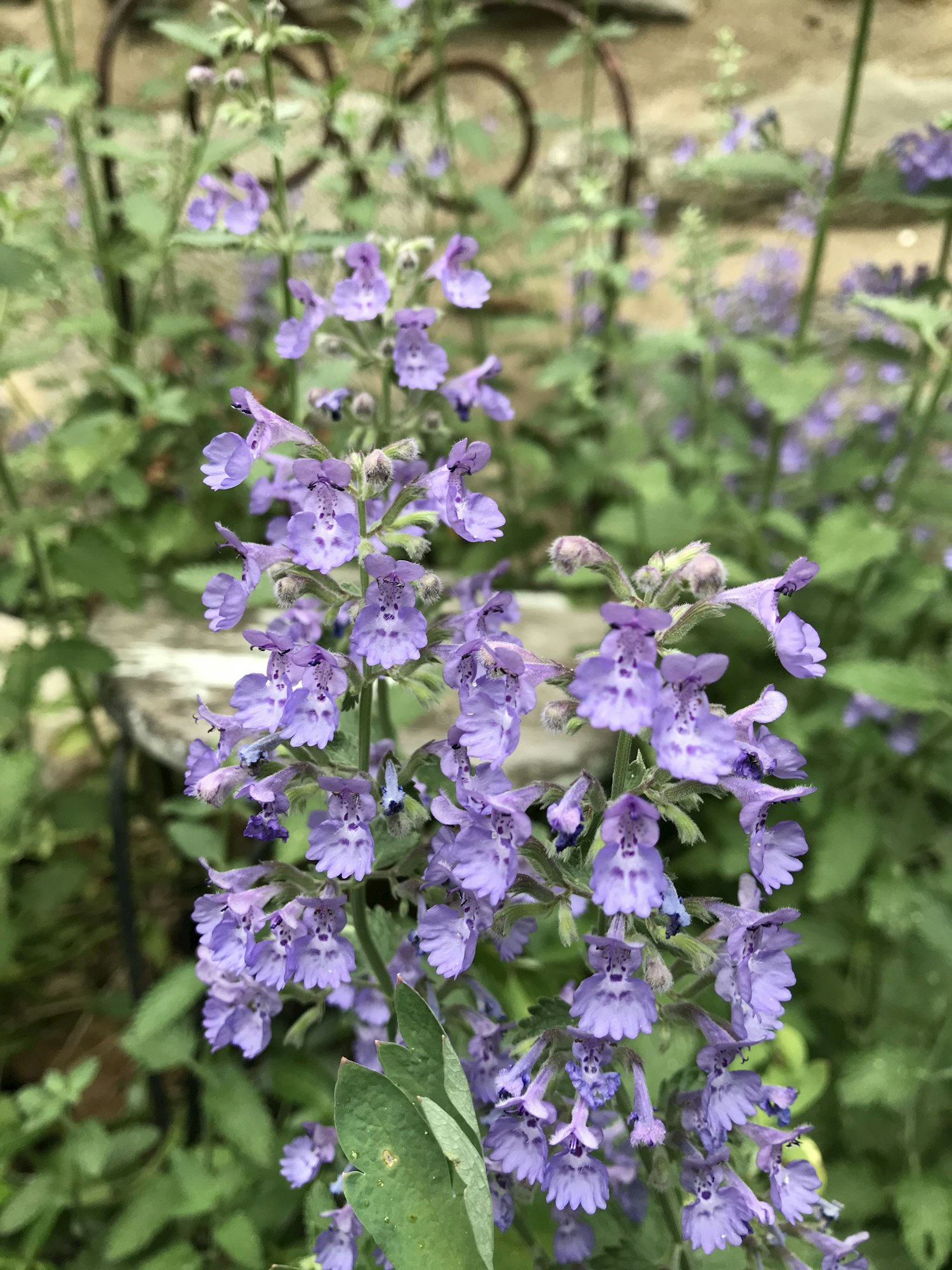
Catmint offers more than just its allure to cats; it’s also a fantastic plant for attracting bees. With its lavender-like flowers and aromatic foliage, catmint is a low-maintenance perennial that can bloom from late spring through fall, providing a long-lasting display of color and fragrance.
- Gardening Tips: Plant catmint in full sun to partial shade in well-drained soil. It’s drought-tolerant once established and can be used as a border plant or ground cover.
- Benefits for Bees: The continuous blooming nature of catmint, coupled with its nectar-rich flowers, makes it an excellent choice for supporting bees and enhancing garden biodiversity.
By incorporating these flowers into your garden, not only will you enjoy a beautiful and vibrant landscape, but you’ll also play a crucial role in supporting the health and diversity of bee populations. Each plant offers unique benefits to bees, providing them with the necessary resources to thrive and pollinate, ensuring the sustainability of our ecosystems.




